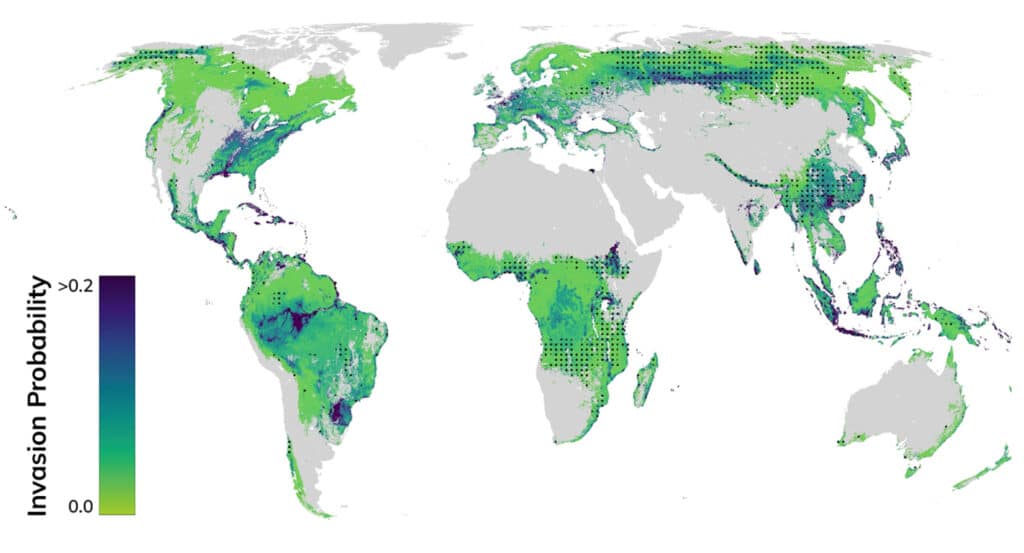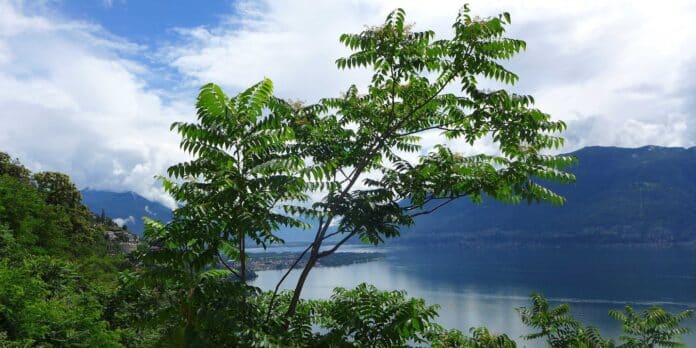Over centuries, human activity has intentionally or unintentionally driven the spread of plant species to areas far outside their native habitat. On average, around 10% of non-native species become invasive globally, producing significant ecological and economic effects for affected regions.
A global team of researchers led by ETH Zurich has found which regions on Earth are most vulnerable to non-native tree invasions. The new study examined human and ecological factors to determine the drivers of tree invasion occurrence and severity across the globe.
According to the new study, proximity to human activity, particularly marine ports, is a significant factor driving the possibility of invasion. Ports handle tonnes of goods, including plants or seeds from all corners of the globe. Therefore, the colonization pressure exerted by plant material is particularly significant in these areas of heavy human activity. The closer a forest is to a port, the higher the risk of invasion.
The severity of invasion is determined by ecological conditions. Most significantly, nature biodiversity helps to mitigate the severity of these invasions. When native species cover the majority of accessible niches in varied forests, it becomes more difficult for non-native tree species to grow and multiply.
The ecological strategy of the invading species is also significant in determining which types of trees may invade particular areas. To live in difficult areas with extreme cold or dry conditions, the researchers discovered that non-native tree species must be functionally similar to native species. Non-native trees must be functionally dissimilar to native species in regions with moderate conditions to survive by differentiating themselves, avoiding excessive competition with native trees for essential resources such as space, light, nutrients, or water.
The study highlights the importance of native tree diversity in helping to limit the severity of these invasions. Camille Delvaux, the study’s lead author, said, “We found that native biodiversity can limit the severity or intensity of non-native tree species invasions worldwide; this means that the extent of invasion can be mitigated by promoting greater native tree diversity.”
The findings directly apply to efforts to manage ecosystems in the global fight against biodiversity loss. This research is essential for designing effective strategies that protect global biodiversity because it identifies places most vulnerable to invasion.
ETH Zurich professor Thomas Crowther said, “Without the incredible cooperation of scientists worldwide, this global perspective would not have been possible.”

The findings have global implications for biodiversity conservation efforts. One of the primary goals of the worldwide biodiversity framework approved at COP 15 in Montreal in 2022 is to prevent the establishment and spread of potentially invasive species.
The purpose of this global analysis of non-native tree species is to contribute to the findings of the Intergovernmental Science-Policy Platform on Biodiversity and Ecosystem Services (IPBES), which is expected to highlight the significant impact of invasive species on biodiversity loss in their upcoming status report.
The researcher said, “This global understanding of non-native tree distributions can help countries prioritize decision-making to halt and reverse biodiversity loss.”
Journal Reference:
- Camille S. Delvaux, Thomas W. Crowther, et al. Native diversity buffers against the severity of non-native tree invasions. Nature. DOI: 10.1038/s41586-023-06440-7
